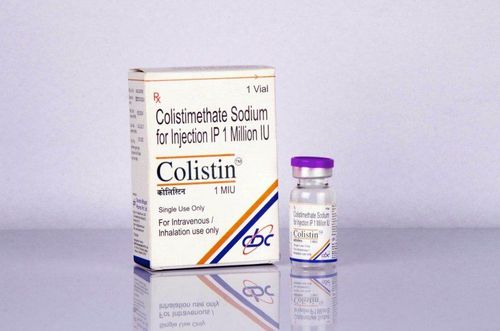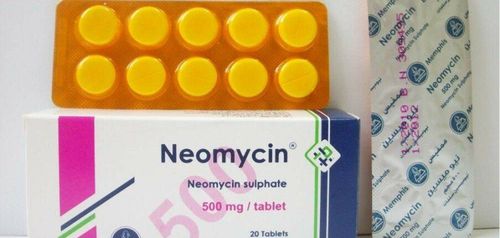This is an automatically translated article.
Tazopelin 4.5g drug has the main active ingredients are Piperacillin and Tazobactam. Tazopelin is a broad-spectrum antibiotic that is bactericidal against aerobic or anaerobic Gram-negative and Gram-positive bacteria, including beta-lactamase-producing bacteria.
1. What is Tazopelin 4.5g?
Tazopelin has the main active ingredient is Tazobactam with the content of 0.5g and Piperacillin with the content of 4g. The drug is prepared in the form of a powder for injection, white or almost white, odorless, bitter taste.
Piperacillin is a broad spectrum penicillin antibiotic. Piperacillin is bactericidal against aerobic and anaerobic, Gram-negative and Gram-positive bacteria by inhibiting bacterial cell wall synthesis.
Gram-positive cocci are very sensitive to Piperacillin, have Streptococus, Enterococus, anaerobic cocci, Clostridium perfringens. Drug-resistant penicillinase-producing staphylococci. Gram-negative aerobic bacteria are sensitive to Piperacillin, including E.coli, Proteus mirabilis, Pseudomonas, strains of Citrobacter, Serratia, Enterobacter, Salmonella, Shigella, Haemophilus influenzae that do not produce beta - lactamase and Meningococcus. Bacteria are moderately or well sensitive to Piperacillin, including Acinetobacter, Klebsiella, Bacteroides and Fusobacterium.
Piperacillin is reduced by beta-lactamase. Piperacillin resistance may be due to beta lactamases and chromosomal alterations that diminish the efficacy of Piperacillin. Therefore, the combination of a beta lactamase inhibitor (Tazobactam) and Piperacillin enhances the effect of Piperacillin. Beta-lactamase is an enzyme that makes bacteria resistant to penicillins and cephalosporins. Piperacillin in combination with Tazobactam has the effect of expanding the antibacterial spectrum of Piperacillin, active against Gram-negative and Gram-positive aerobic and anaerobic bacteria, including bacteria that produce beta-lactamase resistant to Piperacillin.
Bacteroides thetaiotamicron and strains of Pseudomonas except P. aeruginosa are moderately sensitive to Piperacillin/Tazobactam. However, the anti-Enterococus and Pseudomonas activity of Piperacillin/Tazobactam and that of Piperacillin alone were similar.
Methicillin-resistant Staphylococci, Xanthamonas maltophilia and Chlamydia trachomatis are not susceptible to Piperacillin/Tazobactam. Synergistic effect when combining Piperacillin/Tazobactam with Aminoglycoside is applied in the treatment of multi-resistant P. aeruginosa infection. Tazobactam is a triazolylmethyl penicilanic acid sulphone, which is a potent inhibitor of many beta-lactamases, especially plasmid-mediated enzymes that are the common cause of resistance to penicillins and cephalosporins, especially third-generation cephalosporins. Thus, Tazobactam increases the antibacterial spectrum of Piperacillin.
2. Indications and contraindications Tazopelin 4.5g
Indications: used in adults and children over 2 years old, treating the following infections:
Severe pneumonia (hospital-acquired pneumonia or ventilator-associated pneumonia). Severe urinary tract infections complicated by susceptible organisms (including pyelonephritis), especially Pseudomonas. Severe intra-abdominal infection. Severe skin and soft tissue infections (including diabetic foot infections). Septicemia Systemic infections caused by Pseudomonas or patients with neutropenia, a combination of Piperacillin and Aminoglycosides for treatment. Infection prevention in uterine and abdominal surgery. Contraindications:
Allergy or hypersensitivity to Penicillin group, Cephalosporin group. Children under 2 months old.
3. How to take Tazopelin 4.5g
2.1 How to use Intravenous administration: Each vial of Tazopelin 4.5g mixed with 20 ml of sterile water for injection or 0.9% NaCl solution, injected slowly intravenously for 5 minutes.
Intravenous infusion: Each vial of 4.5g is diluted with 20 ml of sterile water for injection or 0.9% NaCl solution, then further diluted to at least 50 ml with compatible solvents: NaCl 0.9 %, Dextrose 5%, Dextrose 5% and NaCl 0.9%, intravenous infusion over 20 - 30 minutes.
2.2 Notes when taking Tazopelin 4.5g Do not mix A 4.5g with other drugs in the same syringe or infusion bottle because the compatibility has not been determined. When Piperacillin/Tazobactam is used concurrently with other drugs, these drugs must be injected at different injection sites or times.
Due to chemical instability, do not mix Tazopelin 4.5g with sodium bicarbonate solution. Tazopelin should not be added to blood products or albumin hydrolysis products.
The solution after reconstitution is stable for 12 hours at room temperature and 24 hours if stored in a refrigerator (2 - 8°C).
2.3 Dosage: The dose and frequency of administration of Tazopelin 4.5 g depends on the expected pathogen, severity and location of the infection.
Patients with normal renal function Adults, children 12 years of age and older:
Usual dose: use 1 vial of Tazopelin 4.5g every 8 hours, intravenously. In case of serious, life-threatening infections thought to be caused by Pseudomonas or Klebsiella: daily dose of at least 4 vials of Tazopelin 4.5g, the interval between doses is 4-6 hours. Maximum dose: 6 vials of Tazopelin.
Patients with fever and neutropenia, empiric treatment with broad-spectrum antibiotics against Pseudomonas aeruginosa and Gram-negative bacilli: 1 vial of Tazopelin 4.5 g IV every 6 hours, mixed In combination with Gentamicin 4-5mg/kg/24 hours, injected once or divided into 2 injections 12 hours apart.
Prevention of infection in surgery: use 1⁄2 vials immediately before surgery, then every 6-8 hours use 1⁄2 vials within 24 hours of surgery (use at least 2 more doses).
Children from 2 months - 12 years old:
The usual dose is 200-300 mg/kg/24 hours, divided doses 4-6 hours apart.
Do not use for children under 2 months old.
Elderly: Tazopelin dose is similar to adults.
Patients with renal impairment: Adjust the dose of Tazopelin according to the degree of renal failure.
Adults, children over 50 kg
Creatinine clearance 41 - 80 ml/min: dose 1 vial every 8 hours. Creatinine clearance 21-40 ml/min: dose 1 vial every 12 hours. Creatinine clearance < 20 ml/min: dose 1 vial/24 hours. For patients on dialysis: a maximum total daily dose of 2 vials 8 hours apart. Because dialysis removes approximately 30-50% of Piperacillin in 4 hours, an additional 1⁄2 vials should be used after each dialysis. Patients with renal impairment, hepatic impairment: measure plasma concentrations then adjust the dose of Tazopelin.
Children under 50 kg:
Creatinine clearance 40- 80ml/min: Dose 90mg/kg (80mg Piperacillin + 10mg Tazobactam) every 6 hours.
Creatinine clearance 20-40ml/min: dose 90mg/kg (80mg Piperacillin + 10mg Tazobactam) every 8 hours.
Creatinine clearance less than 20ml/min: Dose 90mg/kg (80mg Piperacillin + 10mg Tazobactam) every 12 hours.
2.4 Overdose and management: Symptoms of Tazopelin overdose are mainly vomiting, nausea, diarrhea, motor stimulation or convulsions.
Treatment of Tazopelin overdose: Stop using the drug. If convulsions occur, drugs such as Diazepam, Barbiturates can be used. In case of severe, persistent diarrhea, the possibility of pseudomembranous colitis should be considered. In this case, drugs that inhibit intestinal motility should not be used.
3. Some notes when using Tazopelin 4.5g
Before starting Tazopelin, ask carefully about the patient's history of allergy or hypersensitivity to penicillin, or other beta-lactam agents (Monobactam, Cephalosporin, Carbapenem) and other allergens. Serious hypersensitivity, anaphylactic, and sometimes fatal reactions have been reported in patients treated with penicillins, including Piperacillin/Tazobactam. Tazopelin can cause undesirable effects on the skin such as Stevens-Johnson syndrome, toxic epidermal necrolysis, eosinophilia, acute generalized pustular syndrome. In case of skin rash, monitor closely and discontinue Piperacillin/Tazobactam if condition worsens.
Pseudomembranous colitis can occur during or after antibiotics, causing severe diarrhea. Stop using the drug and possibly treat with Metronidazole. Treatment with Piperacillin/Tazobactam has the potential to develop drug-resistant bacteria and cause superinfection.
Bleeding symptoms may occur in patients treated with beta-lactam antibiotics. This reaction may be related to abnormalities in coagulation tests, such as clotting time, platelet aggregation, and prothrombin time. This symptom usually occurs in patients with renal failure. If antibiotic-associated bleeding occurs, the drug should be discontinued and appropriate treatment instituted.
Long-term treatment can cause leukopenia, so it is necessary to periodically check the hematopoietic function.
Similar to treatment with other penicillins, neurological complications such as convulsions may occur with high doses of antibiotics, especially in patients with impaired renal function.
Tazopelin 4.5g contains sodium, it is necessary to pay attention to the amount of sodium in the therapeutic doses of the drug for patients with sodium and water accumulation, especially when taking high doses.
Hypokalemia may occur in patients with low potassium stores or in patients receiving concomitant therapy with hypokalemic drugs. Periodic monitoring of electrolyte levels in these patients.
Renal failure: Tazopelin 4.5g has the potential to cause nephrotoxicity, so it should be used with caution in patients with renal impairment. Dosage and dosing interval should be adjusted according to the degree of renal impairment.
Use caution when using the drug in patients with infectious mononucleosis.
4. Drug interactions
Aminoglycosides: Piperacilin works synergistically with drugs, but these two drugs should not be injected simultaneously.
Probenecid: Co-administration of Tazopelin with Probenecid increased the half-life and clearance rate of both Piperacillin and Tazobactam, but peak plasma concentrations of the components were not affected.
Heparin: When co-administering high doses of heparin with oral anticoagulants or drugs that affect the coagulation system or platelet function, carefully monitor and check coagulation tests more often.
Tazopelin can be used in combination with beta-lactamase-resistant penicillins, but should not be used in combination with cefoxitin in the treatment of infections caused by Pseudomonas.
Metronidazol : Piperacilin used together with Metronidazol need to be injected and taken separately, do not mix drugs.
Methotrexate: Penicillin group can reduce Methotrexate excretion.
With the information about the drug Tazopelin 4, hope to help you better understand how to use and preserve the drug to bring positive effects in the treatment of disease.
Please dial HOTLINE for more information or register for an appointment HERE. Download MyVinmec app to make appointments faster and to manage your bookings easily.













